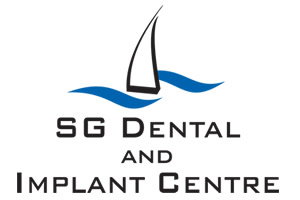Extracting A Tooth
A Burton patient asks about his forthcoming tooth removal
Today’s question comes from a patient who has previously had teeth out using a full anaesthetic and is feeling a little anxious about his forthcoming procedure.
Q. I have been lucky, or perhaps careful, and have had very few teeth removed during my lifetime. I am in my early sixties now and haven’t had a tooth out for over forty years. My memory of it then is very vague as it was always done using ‘gas’ which rendered me unconscious during the procedure. I understand, from friends, that gas is no longer used and it is done with just a local anaesthetic and, I have to confess, it is making me a little nervous. Can you help to put my mind at ease?
Hello and thanks for the question. You are correct that dentists no longer use a general anaesthetic for this procedure. In fact, this can now only be given in hospital for safety reasons. Whilst this did cause some consternation amongst patients initially, most patients would now tell you that it is far better having the tooth removed using a local anaesthetic.
First of all, it is important to understand that local anaesthetics are powerful and you should feel no pain. In fact, one of the main anxieties of some patients during the procedure is the anticipation of a pain that never actually comes. At Mike Allen’s Dental Practice, we always ensure that our patients are fully comfortable and the extraction area is numb before the procedure commences.
General extraction
Patients often expect that we ‘pull’ the tooth out by tugging at it, but this is not what happens. Usually, using special tools to grip the tooth; it is gently manoeuvred backwards and forwards, gradually loosening it from the bone which holds it in place. Only when it is sufficiently loose in the socket, is it finally ‘pulled’ out.
Root extraction
In cases where the tooth is so badly broken that little of it is showing above the gum line, a different approach may be taken. The area will be fully numbed again, using a local anaesthetic. A tool called an elevator is then eased between the bone and the root of the tooth and by turning it, the tooth root is gradually released from the socket and removed. Despite what some patients may think, it is sometimes actually easier to remove the root than a more complete tooth. However, more complex cases may need to be performed by an oral surgeon.
Aftercare
One of the most important considerations following a tooth extraction at our Burton on Trent dental practice, is that of aftercare. It is important that a blood clot is allowed to form in the wound as this starts the healing process and care should be taken not to dislodge it. We will give you full written aftercare instructions upon the completion of the procedure, and we are always here to offer help and advice, should you be concerned about anything following your treatment.
